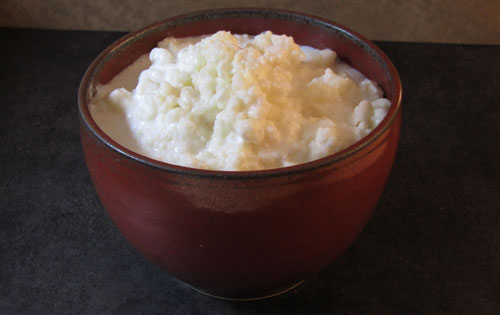
See if they plump up a bit more between brews. Kefir is a fermented food rich in yeast and probiotics or healthy bacteria that aid digestion.

Now its time to feed your kefir grains.
How to increase kefir grains. Anzeige Starter Sets regularly certified and monitored. Start now with Growth Guarantee. If you want to try using kefir in other recipes this is an opportunity for you to increase your production of kefir you can increase production simply by upgrading the size of your container.
This will lower the ratio of kefir to milk and at the same time you will produce additional kefir on a daily basis. Encouraging Water Kefir Grains To Multiply 1. Give the Water Kefir Grains Adequate Time Newly rehydrated water kefir grains sometimes need time to adjust and.
Feed the Water Kefir Grains Regularly Water kefir grains should be switched to new sugar water every 24 to 48 hours. Fill the jar with milk. The exact ratio of milk to kefir grains is not crucial but a general rule is to use 20 parts milk to 1 part grains by volume.
The milk provides food for the yeast and bacteria and will keep your kefir grains healthy and active. Ferment longer than 24 hours Grains can adapt to longer schedules and this will ultimately help the bacteria. If you do consistent 48-72 hour batches It will adapt to this new schedule and will ferment slower more bacteria rich and many times thicker.
Kefir is a fermented food rich in yeast and probiotics or healthy bacteria that aid digestion. Kefir is typically made by adding kefir grains to an open jar of milk often raw goat or cows milk and allowing the milk to sit at room temperature for 24 hours. For the water kefir grains to grow you need to feed them with sugar.
The most suitable sugar to use is unrefined sugar to boost their growth. Unrefined sugar contains several minerals that are absent in refined sugar. You will also need to feed the grains with trace minerals during the fermentation process.
It is like walking around naked in a snowstorm. They need this coating to reproduce themselves and protect themselves because of the combination of bacteria and yeast they make up the composition of kefir grains. Rinsing them washes this away.
If you need to change milks. Kefir grains on a wooden spoon above a jar of homemade milk kefir Monitor Your Grains Closely. The easiest and effective way to determine whether your grains are dead is to keep a close eye on them.
You should be regularly monitoring your grains to look out for signs of problems. If you feel like they could use a boost start by adding a couple of shakes of Himalayan pink salt to your first ferment. See if they plump up a bit more between brews.
Do that for a few rounds and if you feel they need something more skip the salt and try adding a 14 tsp of black strap molasses to your first ferment. Now its time to feed your kefir grains. Pour fresh full cream milk over the kefir grains that have been strained out in the clean jar.
Stir the milk gently with the wooden spoon to. Repeat the process of giving your kefir grains new milk every 24 hours until you kefir is just thickening in 24 hours. If the milk thickens in less than 24 hours strain out the grains and use just 1 grain with 2 cups of milk for your next batch and culture as before.
If you make kefir youll end up with more kefir grains than you know what to do with. Heres some tips on what you can do with the extra kefir grains hint. Describes how grow more Kefir grains quickly.
If you want to increase the growth of Kefir grains you can do by adding mineral sources such as Baking Soda only pinch. Anzeige Starter Sets regularly certified and monitored. Start now with Growth Guarantee.